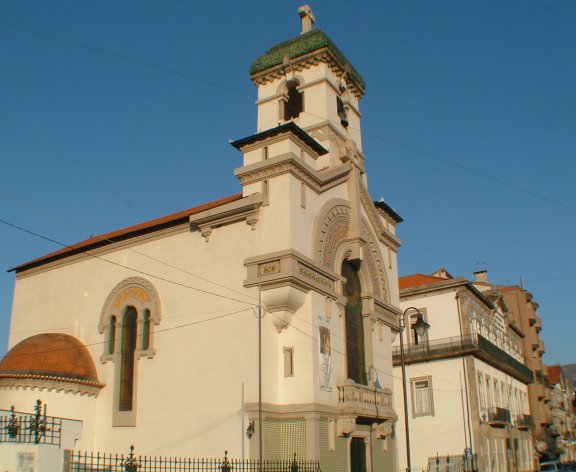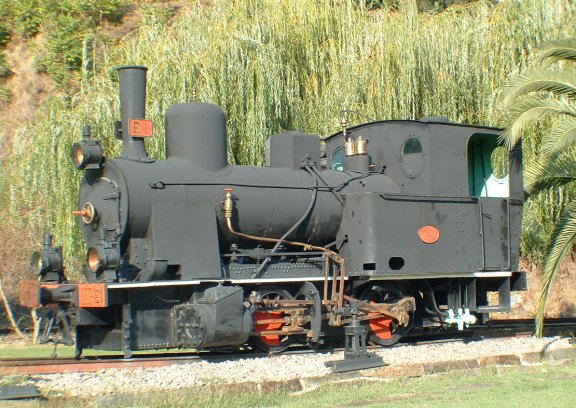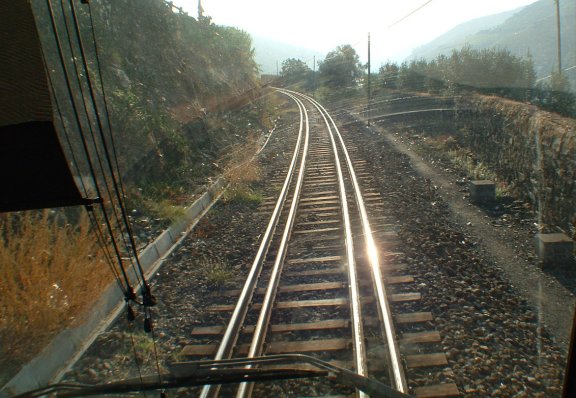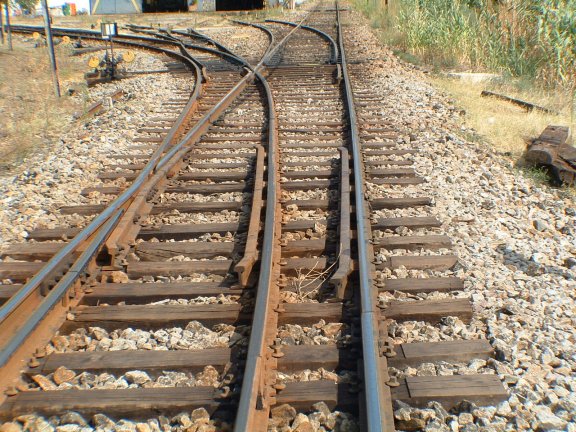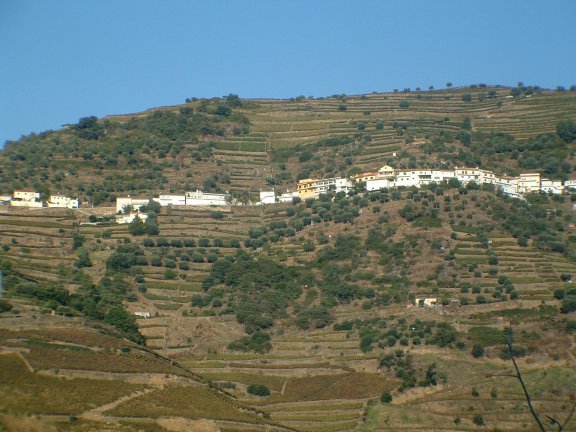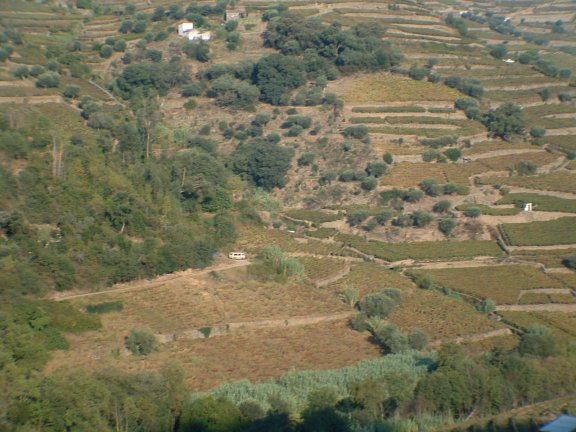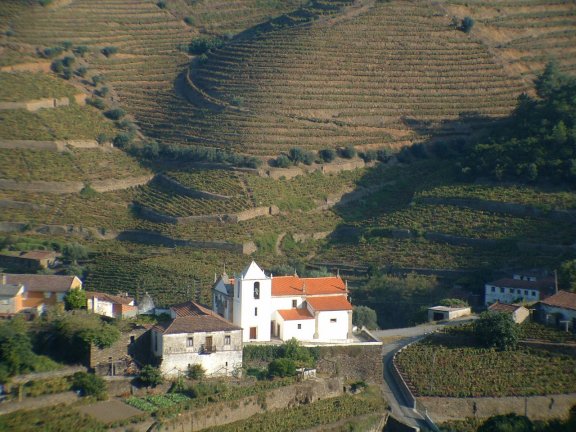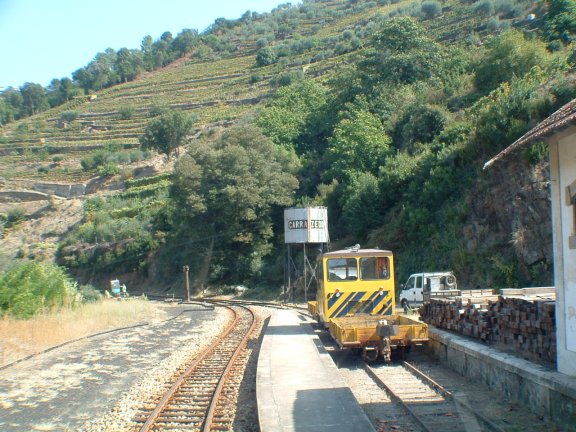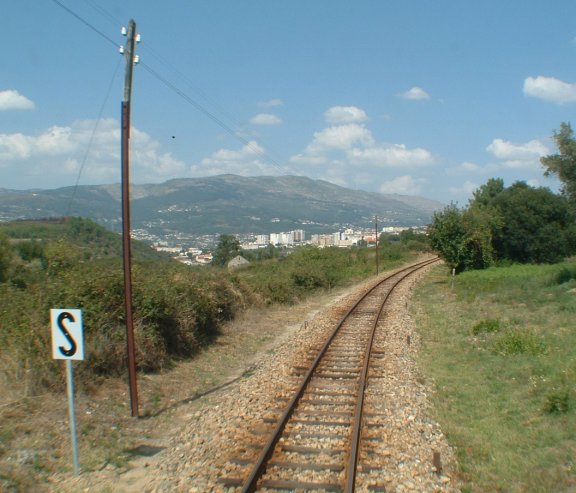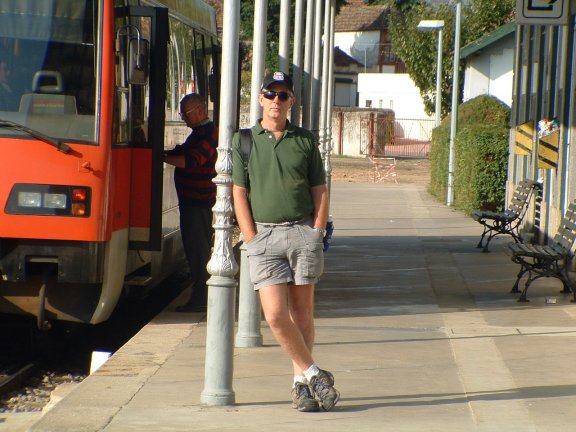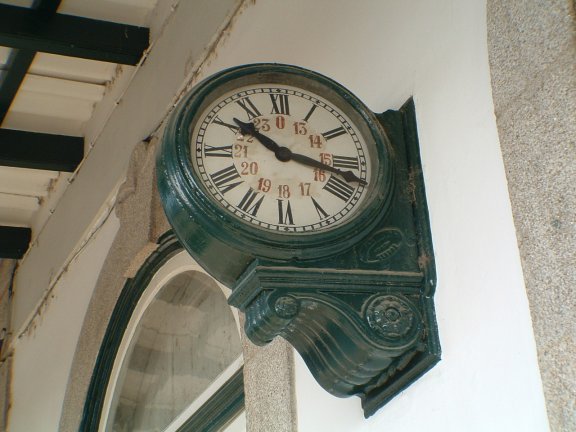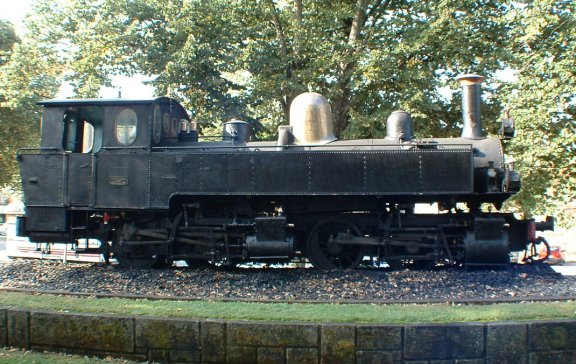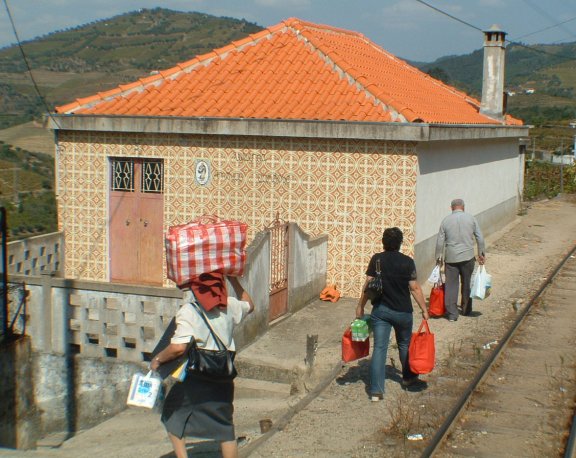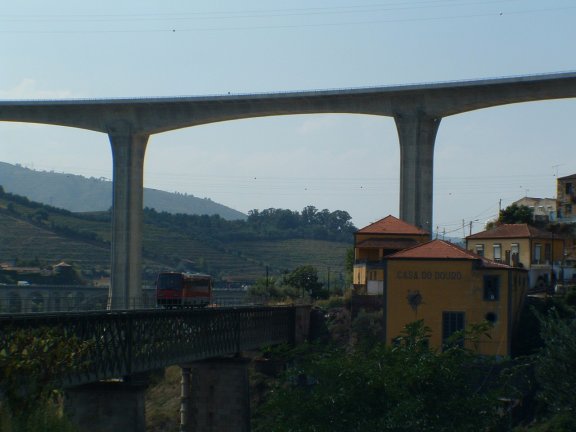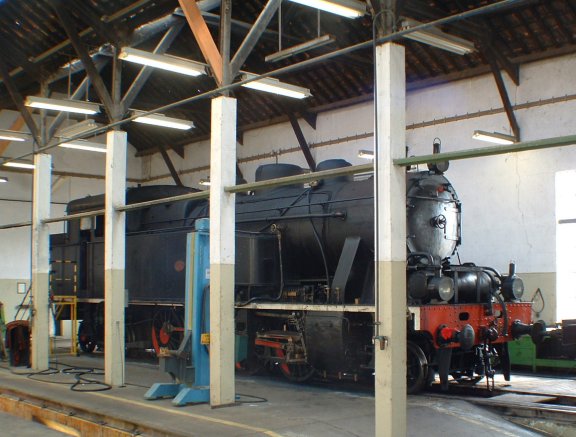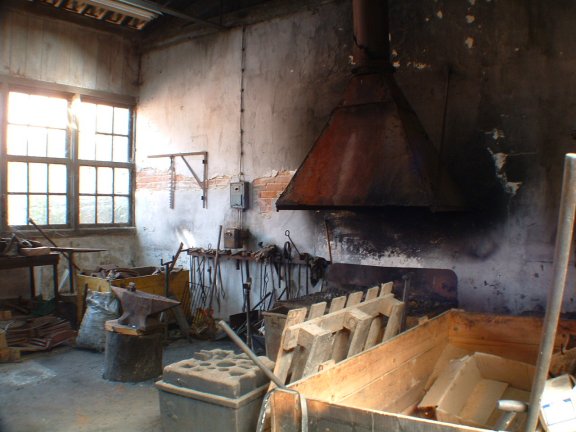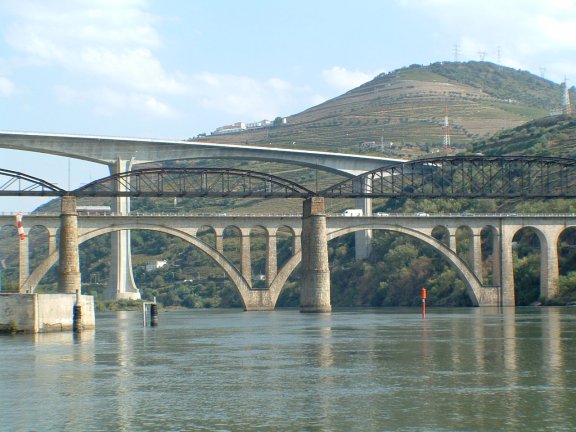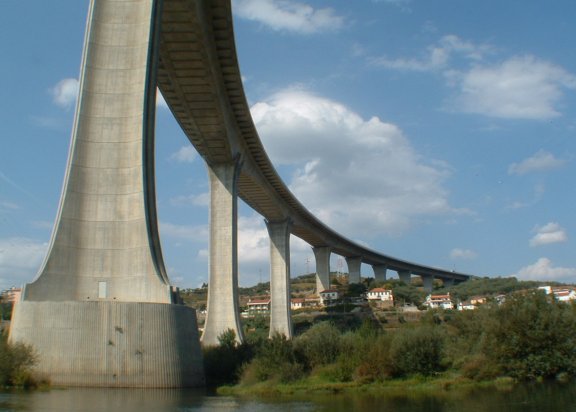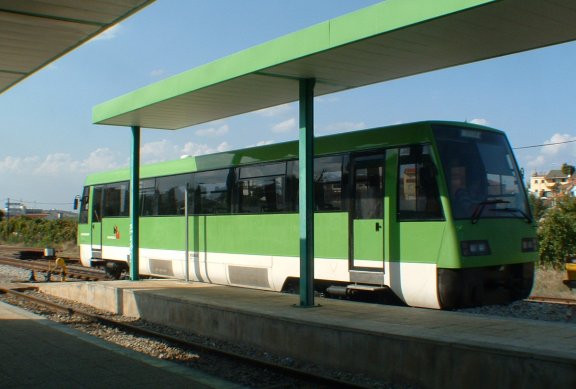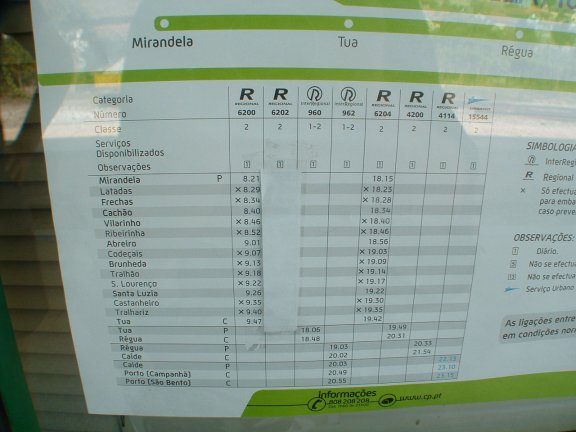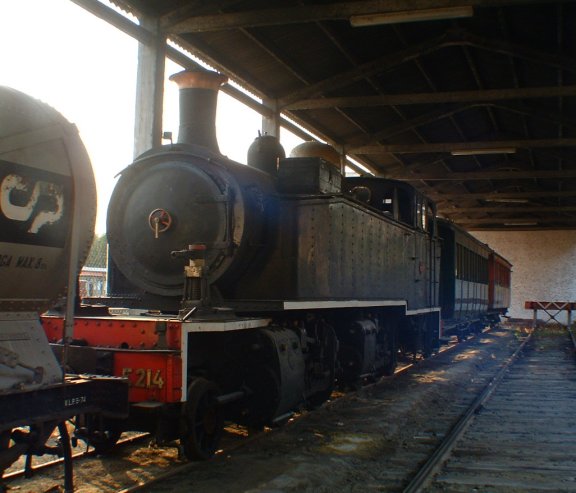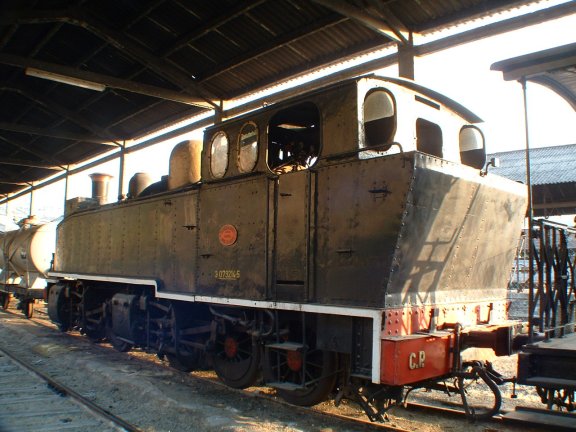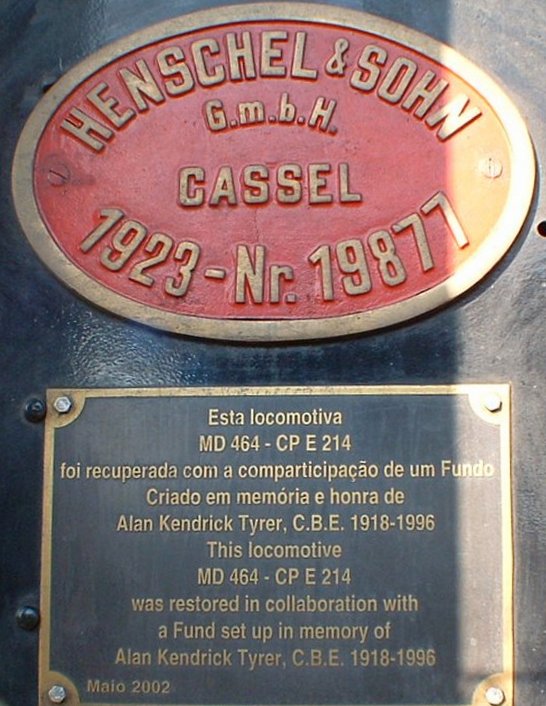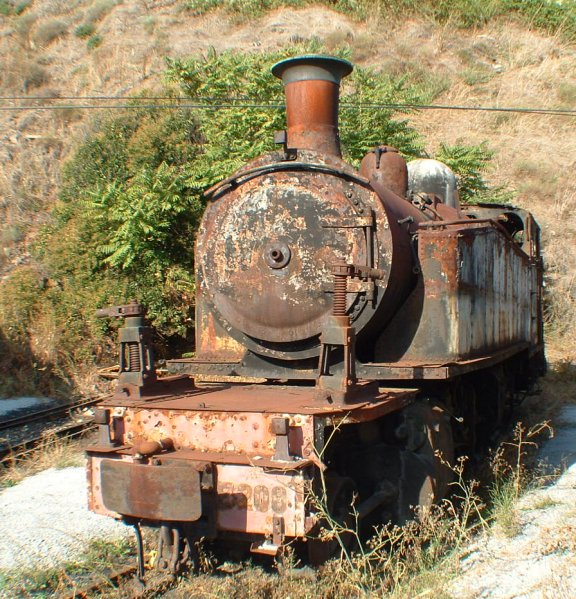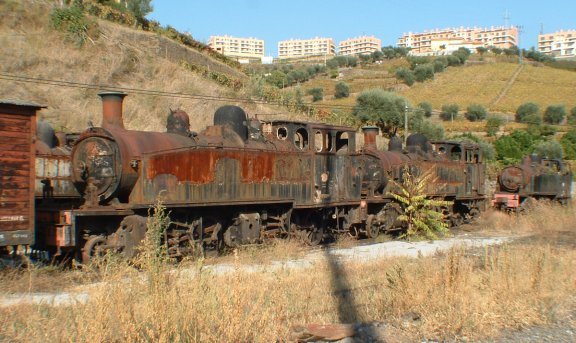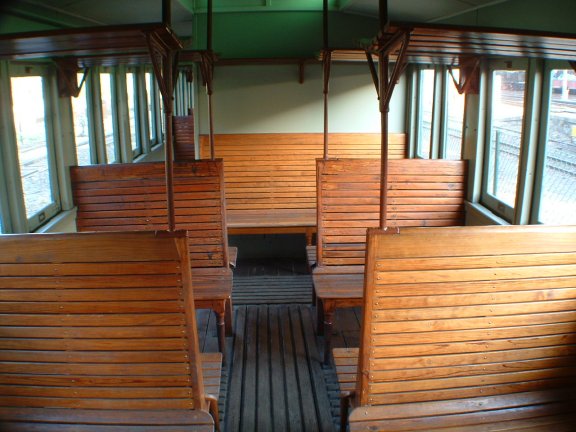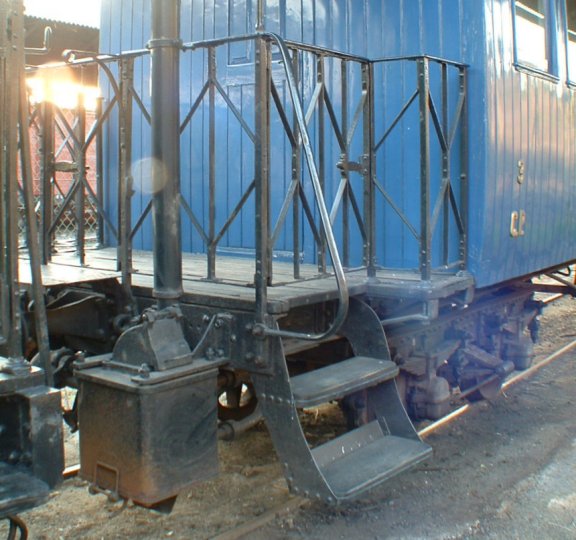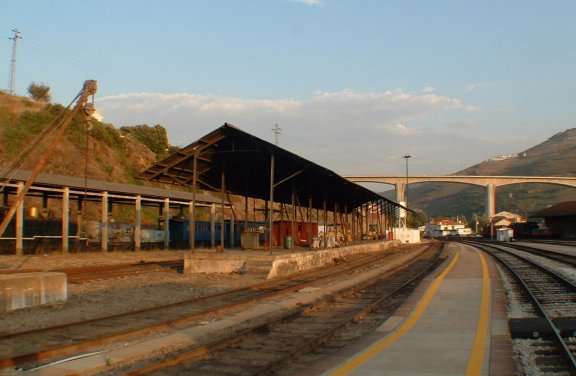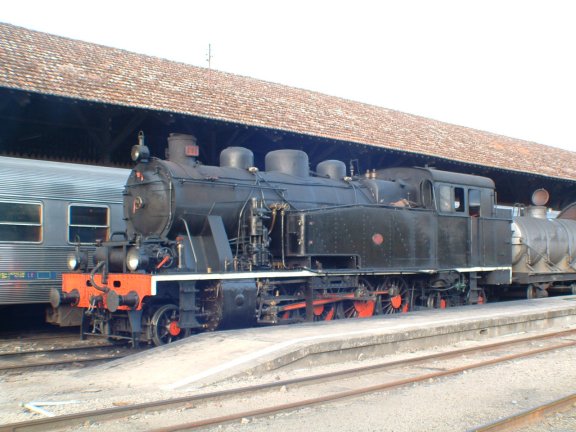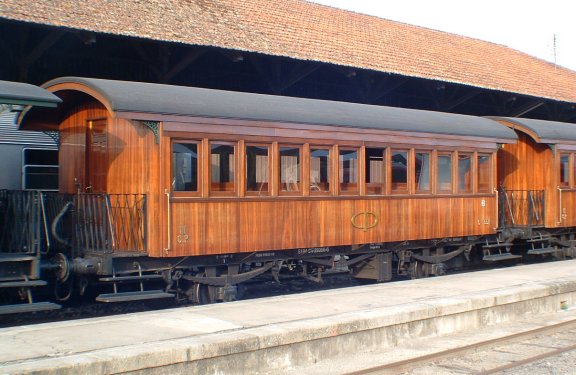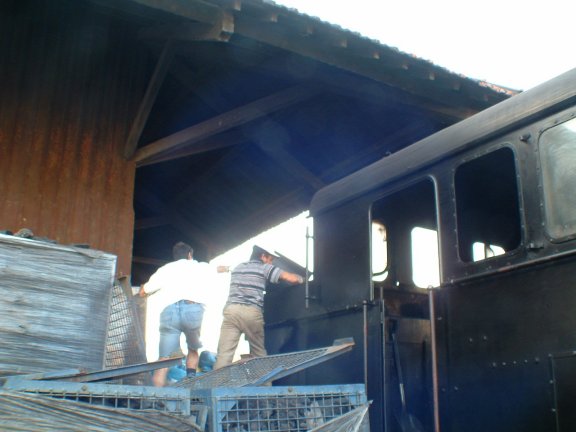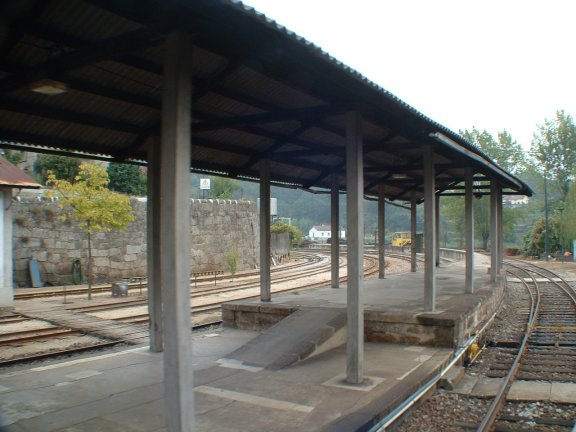|
Regua and the Douro Valley September 2007 As part of our tour of the Iberian Peninsular, we visited the Regua and the Douro Valley in Northern Portugal. I had visited the region twice in the late 1970's with the last visit ending in the first few days of January 1980. I had wanted to make a return visit for some time. This page relates to our rail travel adventures in the area, our other adventures in the region will be documented on our main travel page. There is a broad gauge line that used to run from Porto east to the Spanish border. Today it runs only as far as Pocinho. Off this broad gauge line there were four meter gauge lines at Livracao, Regua, Tua and Pocinho. Today, the first three survive in truncated form, the latter is gone. Much has changed in the region, first the transition to diesel traction from steam in the mid 1970's ending just as I visited in 1979 and then in 1990 the wholesale cut back of the meter gauge branch lines after the total loss of freight traffic and most of the passenger traffic to Cars, Trucks and Buses on the new roads cut into the area. Then the final transition to railcars from locomotive powered trains in the early 90's brings us to the current situation. At the present time the continued existence of the remaining meter gauge lines for daily use by the local population is seriously under threat of complete closure as early as this year. As is the broad gauge line east of Regua. Until the mid to late 1970's the meter gauge lines were operated by a fleet of beautiful Henschel mallet tank locomotives built between 1905 and 1923 of two variations. 0-4-4-0 and 2-4-6-0. The Mallets were supported on some of the lines by even older smaller locomotives almost all made in Germany. Here is what we found...
A view of the Church with the pension next door just along the road from Regua station. We tried to get a room at the pension where I and many others interested in the railway had stayed in the 1970's but it was either full or not open (I suspect the latter).
This is E1 the Regua meter gauge yard switcher in the last days of steam. She was supplied by Henschel in 1922. I do not know why she received the number 1 plate. I can only assume she had a place of affection on a senior managers roster. In January 1980 this loco was still in use, the last steam loco in the Douro Valley in daily use. I had a great time running round the yard in her. Clearly she is still held in great esteem by the railwaymen of Regua as you can see she is well kept as is the small park she sits in.. The station buildings have several images of her in operating days.
Today the only trains running are single railcars that were built in Porto in the 1990's This is the drivers view leaving Regua heading east on the dual gauge track-age over the Corgo river
After crossing the river, this is the broad gauge - meter gauge junction with the line to Vila Real curving away to the north.
Views from the train of the vineyards and olive groves that line the valley walls
This is a typical intermediate station. Water tower still place albeit just to announce the location? The only other traffic on the line is maintenance of way vehicles, the only reason to keep the occasional siding in place. Most sidings have been removed.
The approach to Vila Real
Vila Real station today. The platform is well kept but all the facilities save the water tower and turntable have been removed.. The tracks are still in place to the north but for how far I do not know. I was told some of the route north to Charves had been made into a bicycle path. The station building was locked up with access to the platform by a side passage beyond the second bench.
The station clock is still in place but not operational. It should be set to one minute to midnight!
Outside the station this Henschel Mallet is on display. Built in 1908, she is kept in excellent condition and all fittings are present. Someone is caring for her. The motion was soaked in waste oil.
A somewhat timeless view of three locals who rode the train south from Vila Real to an intermediate station after shopping at the German ALDI supermarket there. The Chinese bag on the head of the lady also dates the image....
As we approached Regua on the return journey. I got off at the loco shed. I then took this image of the railcar heading back west over the Corgo River to Regua station. The reason for the decimation of rail traffic in the area can be seen above the train....
Inside the ISO 9001 approved loco shed, broad gauge (5' 3") 0187 was seen undergoing it's weekly check up
The forge is still in place.
Reguas famous bridges now dominated by the new expressway
Another view.
We also took a ride on the Tua line from Tua to Mirandela. The only difference in the railcars being the color. When we purchased our tickets Regua- Tua - Mirandela at Regua station. We were told then that there was a bus service for the first 8 km of the Tua branch line due to track repairs. We arrived at Tua station and along with the other six passengers (four local and four tourists including us) we were shown quickly to a waiting mini bus that was to take us past the track work to Brunheda station. There we joined the above train to Mirandela. In Tua there is a small but well maintained museum on the island platform and two 0-4-4-0 Mallets both in poor but restorable condition.
We also were told in Regua that there was a return train from Mirandela to Tua at 16:20 which suited us. However, upon arrival back at Mirandela station in good time for this train we were to discover it was not running. After checking around, I found this timetable posted in a window. The simple slip of paper shown above hiding the times of the non-running train was also hiding as very sad story..... In February 2007 a train left Tua heading north with THREE crew and TWO passengers on board. It never arrived at Brunheda. It rounded a corner to find the line blocked by a rock fall. The train hit the rocks, derailed and plunged into the swollen river. The three crew all drowned. The two passengers somehow survived. The railcar was cut up on site in August 2007. With the loss of the railcar and three crew we were told there were insufficient resources to operate the 16:20 service. Because of the imminent closure of the line, there has been no incentive to replace the crew, the railcar or repair the line. Therefore we walked to the adjoining bus station built on the site of the old railway workshops that in 1980 contained dozens of steam locomotives waiting their fate and took a bus back to Regua via Vila Real on the new expressway which winds its way around the mountain tops. Before we left Mirandela the person that told us about the disaster stated he was going to Porto for the weekend. "Shall you go by train I asked?" "Are you kidding" he replied. "It takes one hour by car on the new expressway. It takes 5 hours by train"........
This is E214 which as far as I know is the only surviving meter gauge loco in operating condition. It is kept with it's water tank car and about three coaches in the yard at Regua for use on the Corgo Line However it has not been used in 2007 "because of fire bans". Clearly an issue that can be resolved with today's knowledge and technology.
E214
The builders and memorial plates on E214
At the back of the yard in Regua there are still five more meter gauge mallets of the same class as E214. All are in restorable condition. Note this one, E208 still has its copper capped chimney.
Three more of the five remaining mallets "in store" at Regua. In 1990 there is photographic evidence that there were thirteen standing here. In 1997 nine. Some have gone to other tourist lines in Europe. Curiously, in January 1980 the only steam locomotive in Regua operating or otherwise was E1...
The spartan interior of the meter gauge coaches kept with E214
A view of the coal furnace on one of the preserved meter gauge coaches
A view looking east from the Regua platform showing the covered building holding E214 on the far left and the new bridge in the background
0187, a broad gauge 2-8-4 tank loco built by Henschel in 1925. Today it hauls a tourist train from Regua to Tua every Saturday afternoon from May to October. This loco regularly worked this line in daily service until the early 1970's. I wonder what will happen to it if the line to Tua closes?
The beautifully restored coaches that 0187 hauls
This is how 0187 is coaled today. Two guys with a 40 liter trash can hand loading the coal from the (road delivered) pallets on the left . The loco is watered in Regua station with a garden hose which I assume means that all the water towers still in place do not work.
This was the last view we had of the meter gauge in the Douro Valley. On our return to Porto I took this image of the very tidy but deserted scene at Livracao. In 1980 this was also to be the last place where I saw a locomotive in steam when 0-4-4-0T E168 was at the head of a maintenance of way train. I bailed off the train I was on to take a ride. There may well be a steam loco in the building on the left today as there are efforts to make this branch line into a tourist attraction because of it's close proximity to Porto.
To see the activity in this area in the late 1960's and early 1970's take a look at the web sites of Geoff Plumb and Paul Sharp For a more recent look at the Tua-Mirandela line also see here
Images by Janet and Trevor Heath September 2007 trevordotheathatlivesteamingdotcom Return to main travel page
.
|
